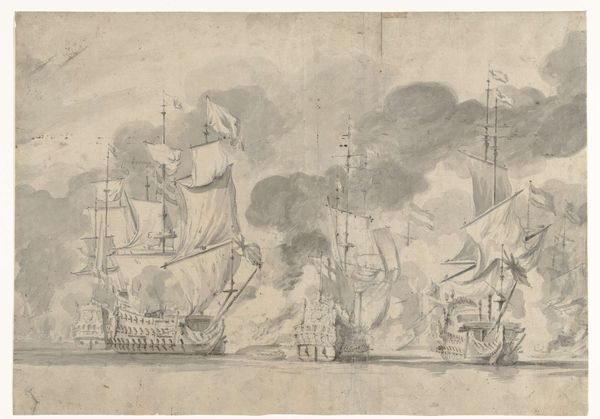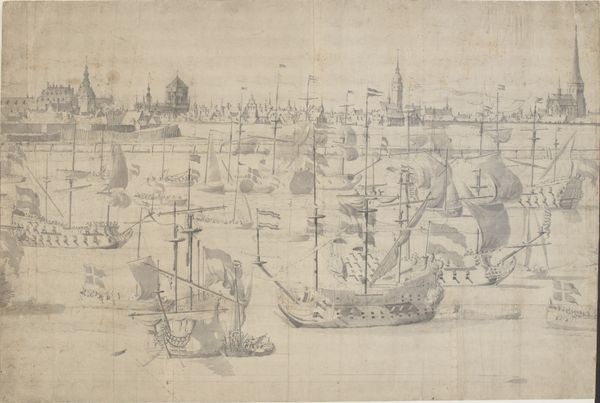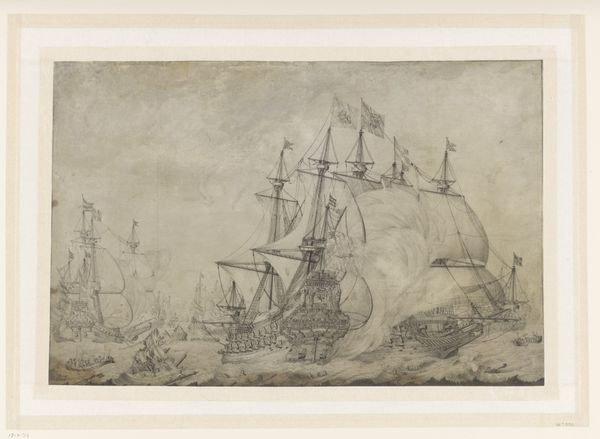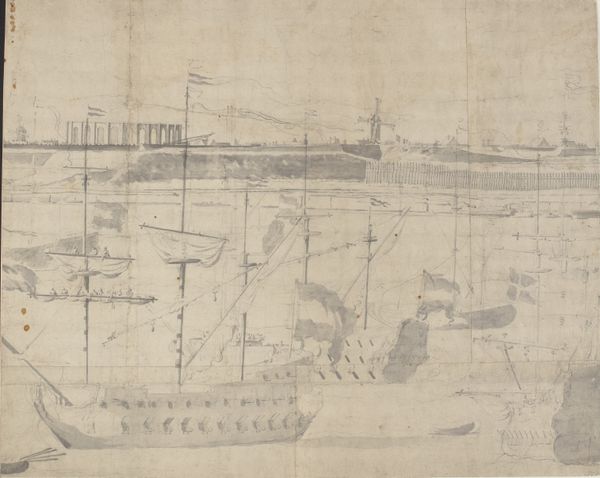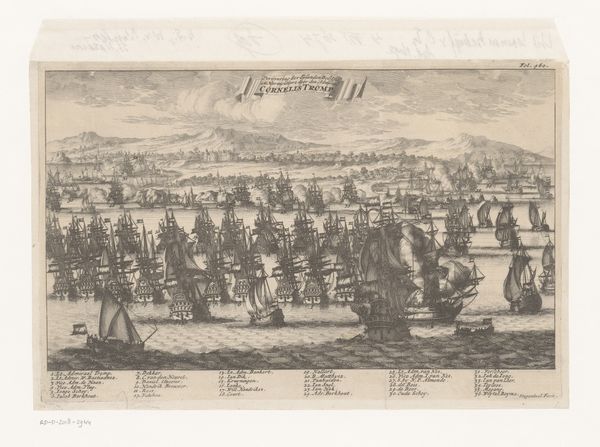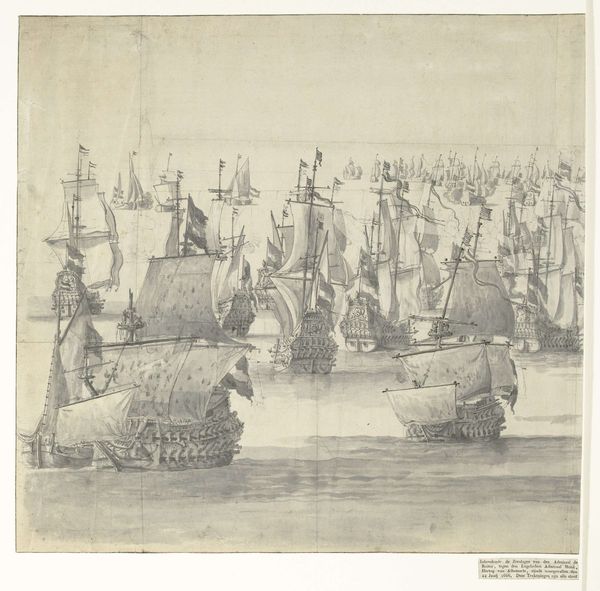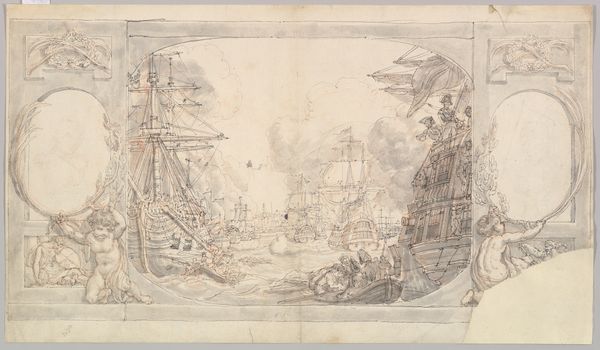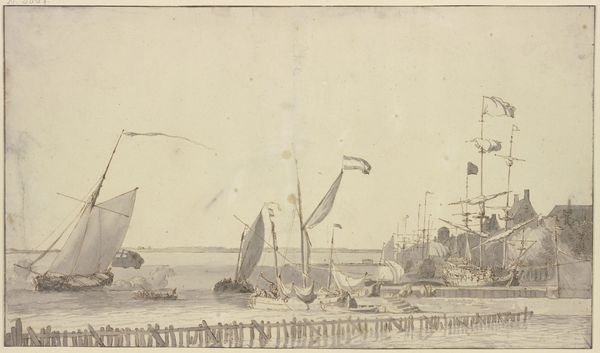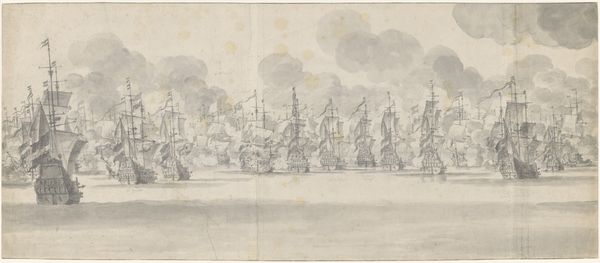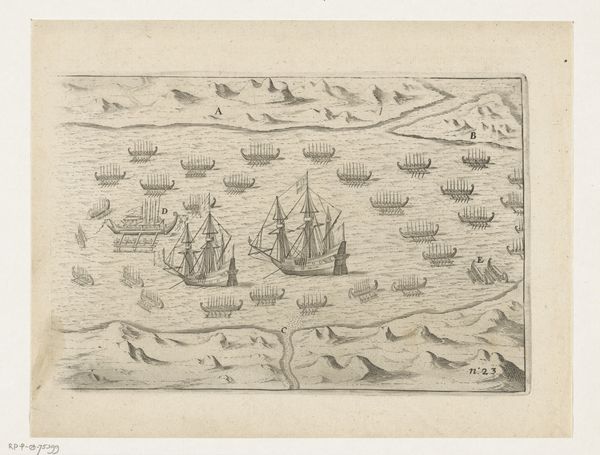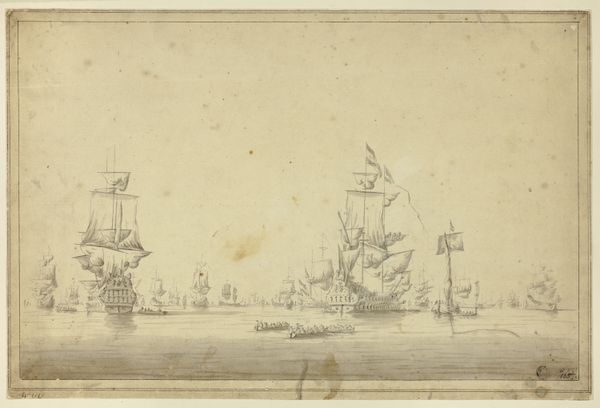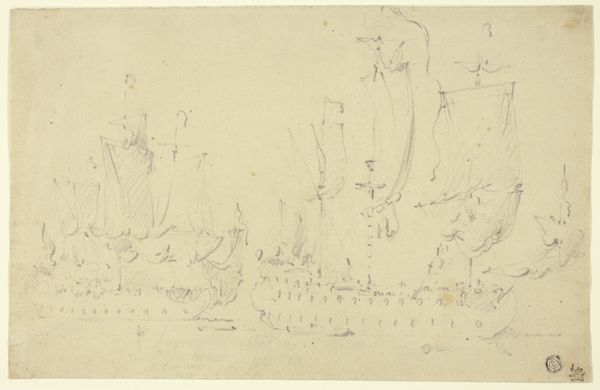
drawing, paper, ink
#
drawing
#
dutch-golden-age
#
landscape
#
paper
#
ink
Dimensions: 537 mm (height) x 625 mm (width) (bladmaal)
Editor: This drawing, "The Dutch Fleet at Copenhagen Roads 1658," was created by Willem van de Velde the Elder. It’s ink on paper. It gives the impression of a very still, almost eerily quiet moment before an attack, even though it depicts a large naval fleet. What catches your eye? Curator: It's the flags, of course. Dominating the visual field and acting as a sort of symbolic code. Flags have always carried immense psychological weight, signaling allegiance, power, and the very identity of a nation. Here, though, I think they are deliberately muted. Editor: Muted? I wouldn’t have thought of that. Can you explain why muted? Curator: Well, they are not waving heroically, for one thing. Consider what a flag truly *means*: it represents not just a country but its collective memory, shared values, and the narratives it chooses to perpetuate. Yet, here, they seem...inert, hanging limply. What story do you think van de Velde is attempting to tell through their subdued presence? Editor: Perhaps he’s suggesting a lack of confidence, or maybe the calm before a major conflict that could have devastating consequences. So, they aren’t powerful symbols, just potential triggers for nationalistic tensions and anxieties. Curator: Precisely. And that tension is what resonates even centuries later, reminding us that symbols are never neutral. They're vessels carrying heavy cultural and psychological cargo. Editor: That makes sense. I hadn't considered the psychological aspect of something like a flag in a historical scene. It adds a new layer of depth to understanding the artwork. Curator: Exactly. Visual imagery allows us to reflect on the narratives we create and perpetuate across time. Every viewing allows an opening into continuity through visual symbols.
Comments
No comments
Be the first to comment and join the conversation on the ultimate creative platform.
